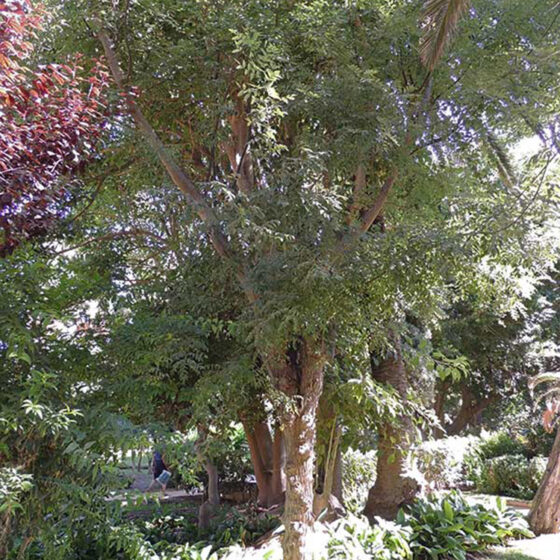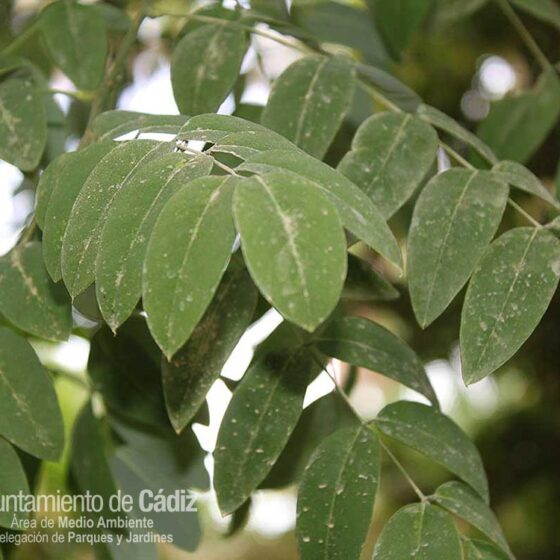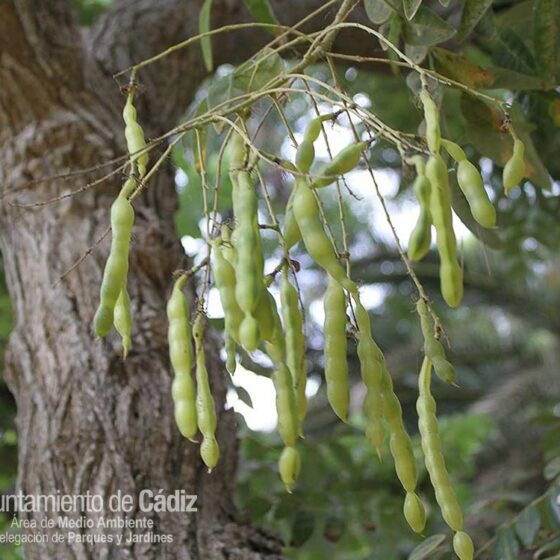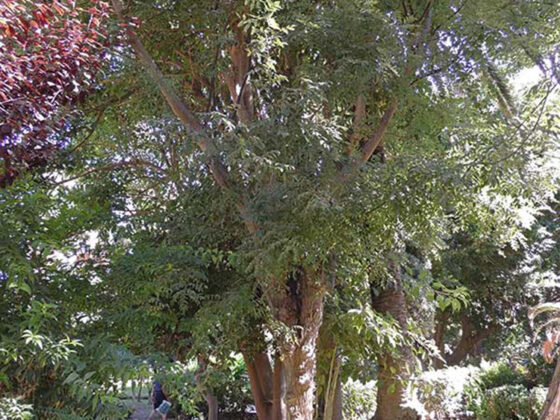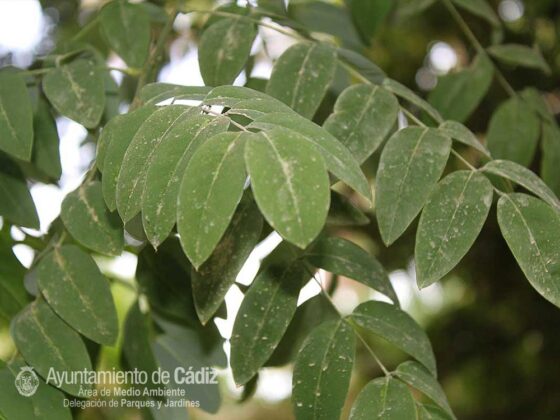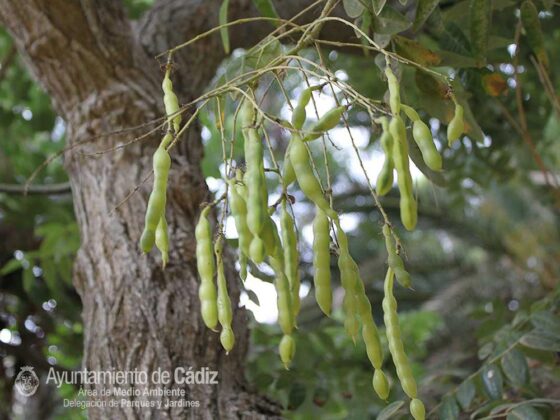Japanese Pagoda tree
Sophora japonica
The Sófora (feminine) or Sofor (masculine), also called honey tree, tree of the pagodas and False Acacia of Japan is a leguminous tree, native of the east of Asia (mainly China, and was introduced to Japan). It is a popular ornamental deciduous tree of Europe and America, as it has white flowers that bloom in late Summer, after many other flowering trees have already finished flowering.
The name of Sophora derives from “sufayra”, the Arabic name of a leguminous tree. The specific epithet comes from the Latin japonicus-a-um = Japanese, from Japan, where it is very frequent but not native.
It is, with Robinia pseudoacacia and Gleditsia triacanthos, one of the three “false acacias” planted in so many cities around the world to decorate streets and parks.
It has an erect stem, which grows slowly from 5 to 10 m in height. Its trunk has a ridged bark which can be seen by its twisted lines. It has pinnate-compound leaves of 4 to 10 leaflets which are oval-lanceolate, sharp, dark-green on the top of the leaf and glaucous on the underside. It has beautiful summer flowers which have a delicate smell, are creamy-white in colour, and they gather in clusters forming great panicles. The fruit is an indehiscent vegetable, which is not yet mature. It remains on the tree when the foliage has been lost at the beginning of Winter, they ripen and fall somewhat later.


